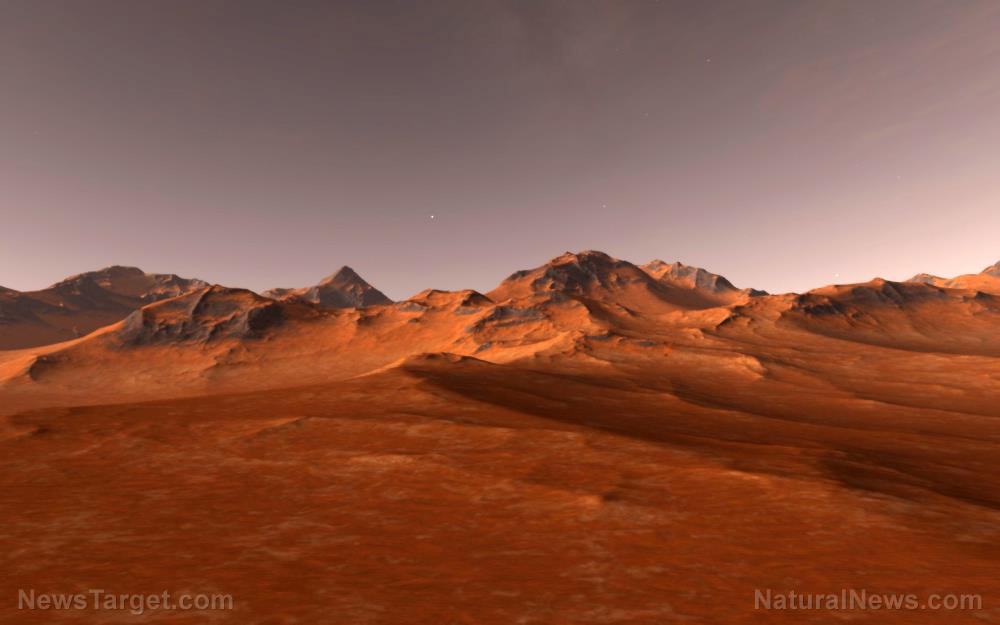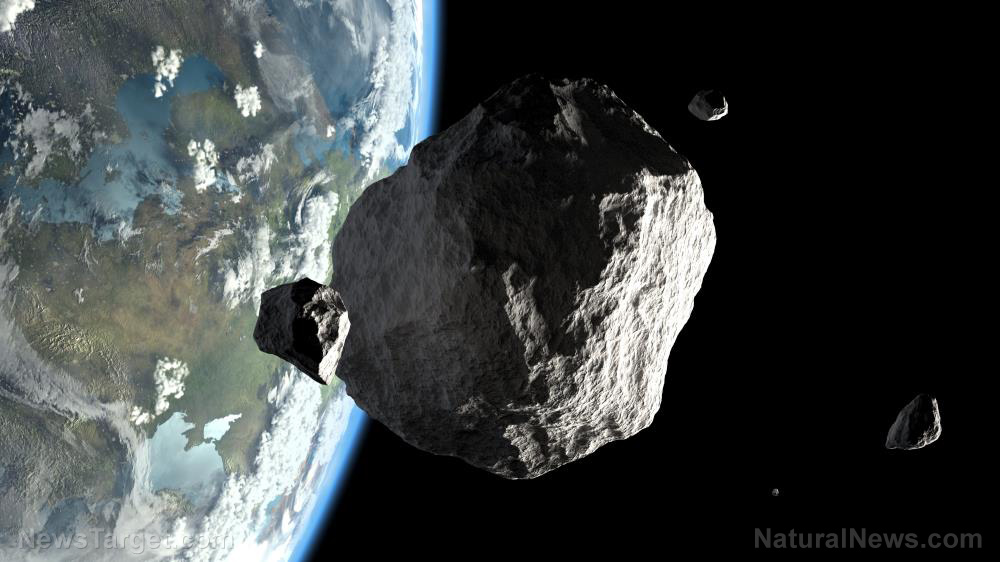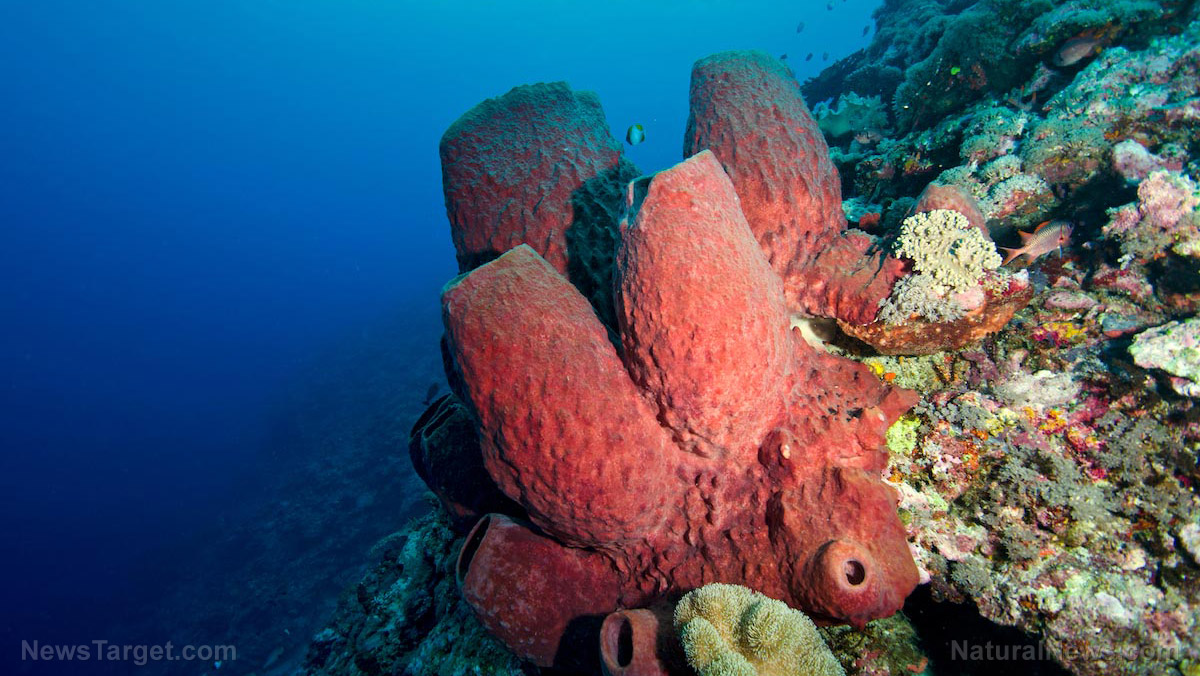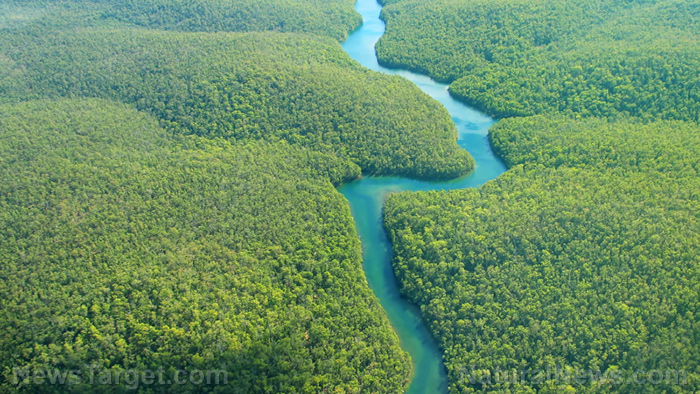Mars mystery solved: Scientists identify mineral that rewrites planet’s volcanic history
09/30/2025 / By Cassie B.

- A long-mysterious mineral on Mars has been identified as ferric hydroxysulfate, formed under high-heat volcanic or hydrothermal conditions.
- This discovery proves Mars remained geologically active less than 3 billion years ago, which is far longer than scientists previously assumed.
- Key locations like Juventae Plateau and Aram Chaos reveal volcanic and hydrothermal processes reshaped the planet’s surface in its recent past.
- The finding suggests liquid water and energy sources may have existed more recently, raising new possibilities for past microbial life on Mars.
- Advanced AI-driven imaging techniques were crucial in isolating the mineral’s signal, proving cutting-edge tech can unlock hidden secrets of Martian geology.
For 15 years, planetary scientists have been baffled by an unusual mineral signature on Mars—one that didn’t match anything found on Earth. Now, researchers have cracked the case, identifying the substance as ferric hydroxysulfate, an iron-based compound that forms only under specific high-heat conditions.
The discovery, published in Nature Communications, suggests Mars remained geologically active far longer than previously believed, with volcanic and hydrothermal processes shaping its surface less than 3 billion years ago.
The breakthrough came when scientists at the University of Massachusetts Amherst and international collaborators recreated the mineral in a lab by heating iron sulfates above 100°C in the presence of oxygen. The resulting spectral fingerprint matched the mysterious signal first detected in 2009 by NASA’s orbiting spectrometer. Unlike most Martian sulfates, which form in cold, wet environments, ferric hydroxysulfate requires heat and oxygen—conditions linked to volcanic or hydrothermal activity.
Two key locations reveal Mars’ fiery past
The mineral was found in two distinct regions: Juventae Plateau, where volcanic heat likely transformed existing sulfates, and Aram Chaos, a collapsed crater where underground hydrothermal systems may have driven the reaction. At Juventae, thin layers of ferric hydroxysulfate appear sandwiched between volcanic rocks and other sulfates, suggesting lava or ash heated the deposits. At Aram Chaos, the mineral sits at the base of sulfate layers, possibly warmed by ancient groundwater eruptions.
This discovery challenges the assumption that Mars’ major geological activity ended early in its history. Instead, the findings indicate that volcanic and hydrothermal processes persisted into the Amazonian period, less than 3 billion years ago—a time when many believed the planet had already gone dormant.
What does this mean for Mars exploration?
The identification of ferric hydroxysulfate doesn’t just solve a long-standing mystery; it opens new questions about Mars’ potential to support life. Heat and water are key ingredients for habitability, and the mineral’s formation suggests that liquid water and energy sources may have existed more recently than thought. Future missions could search for similar deposits in other sulfate-rich regions, offering clues about past environments where microbial life might have thrived.
The research also highlights the power of advanced imaging techniques, which helped isolate the mineral’s signal from atmospheric noise. As Mario Parente, a UMass Amherst engineer involved in the study, explained, “The data that comes out of the spectrometer is not usable the way it is.” His team used AI-driven mapping to pinpoint the mineral’s locations, proving that cutting-edge technology can uncover hidden details in Martian geology.
A window into Mars’ dynamic history
For years, scientists assumed Mars’ most dramatic geological changes happened billions of years ago, during the Noachian and Hesperian periods. But ferric hydroxysulfate’s formation in the Amazonian period suggests the planet stayed active much longer. This aligns with other evidence of recent volcanic activity, such as the 2021 discovery of a possible magma chamber beneath Elysium Planitia.
The study’s authors note that while ferric hydroxysulfate hasn’t been found elsewhere yet, similar spectral signals in regions like Aureum Chaos could indicate its wider presence. If confirmed, this mineral could become a key marker for tracking Mars’ thermal and chemical evolution.
This discovery reinforces that Mars is not a static, dead world but one with a complex, dynamic history. The presence of ferric hydroxysulfate suggests that even in its later years, the planet had the energy and conditions to alter its surface, possibly creating niches where life could have persisted.
As researchers continue to analyze Mars’ mineralogy, each new finding brings us closer to understanding whether the Red Planet was ever habitable and whether it still holds secrets beneath its rusty surface. For now, ferric hydroxysulfate stands as proof that Mars’ story is far from over.
Sources for this article include:
Submit a correction >>
Tagged Under:
cosmos, discovery, environ, geology, Mars, minerals, research, Space
This article may contain statements that reflect the opinion of the author
RECENT NEWS & ARTICLES
COPYRIGHT © 2017 REAL SCIENCE NEWS



















